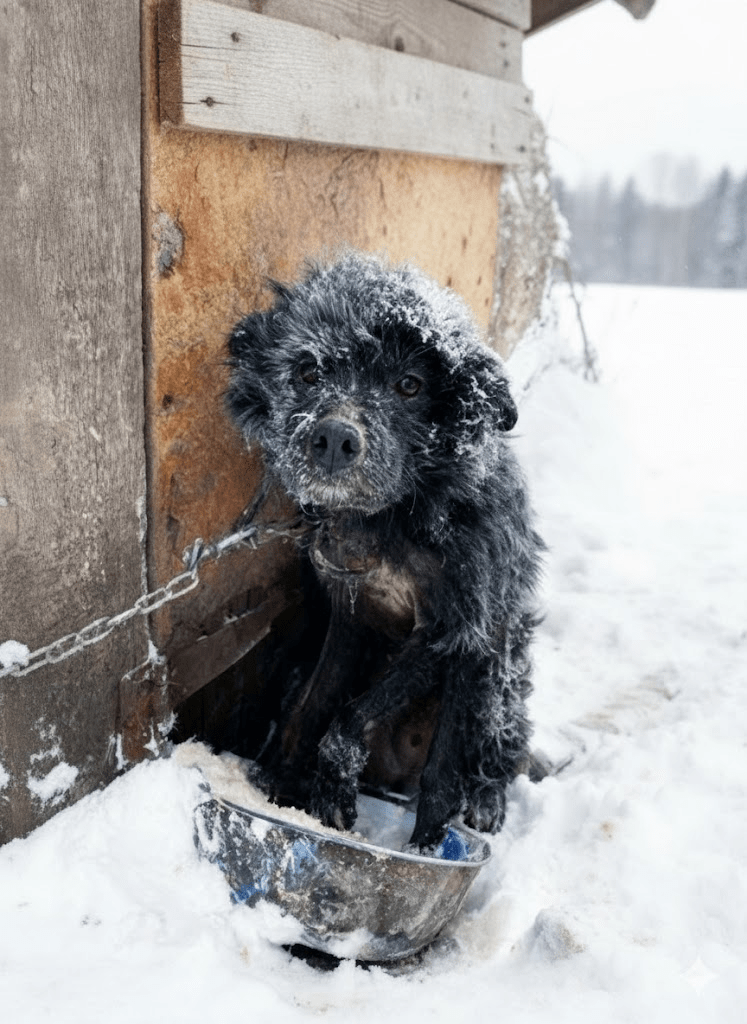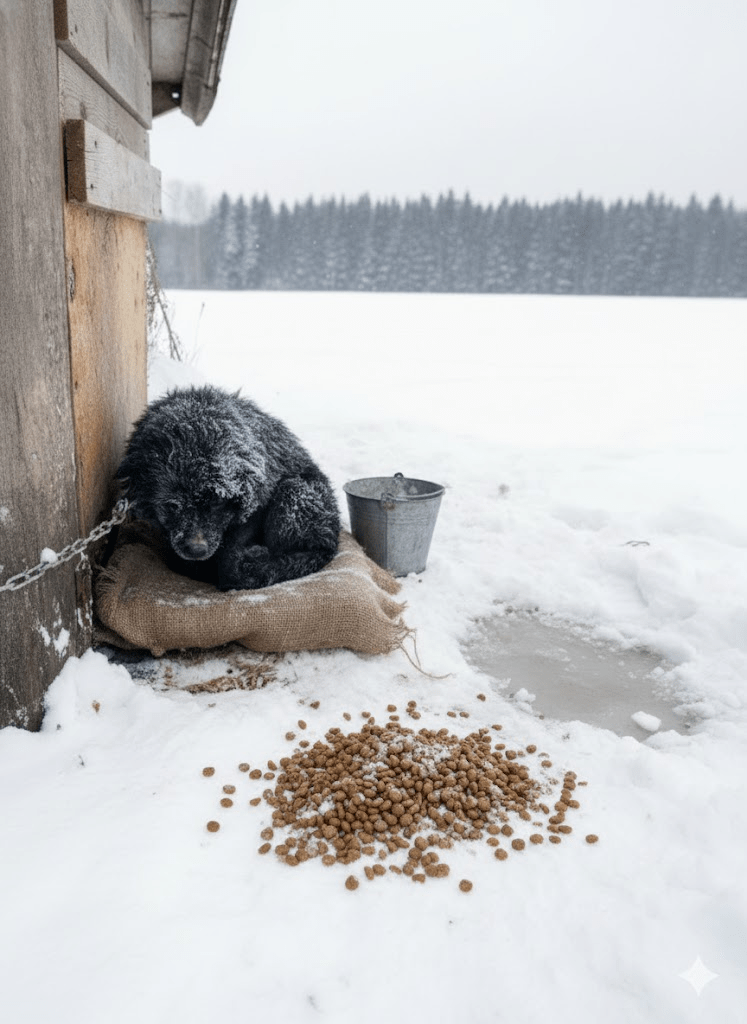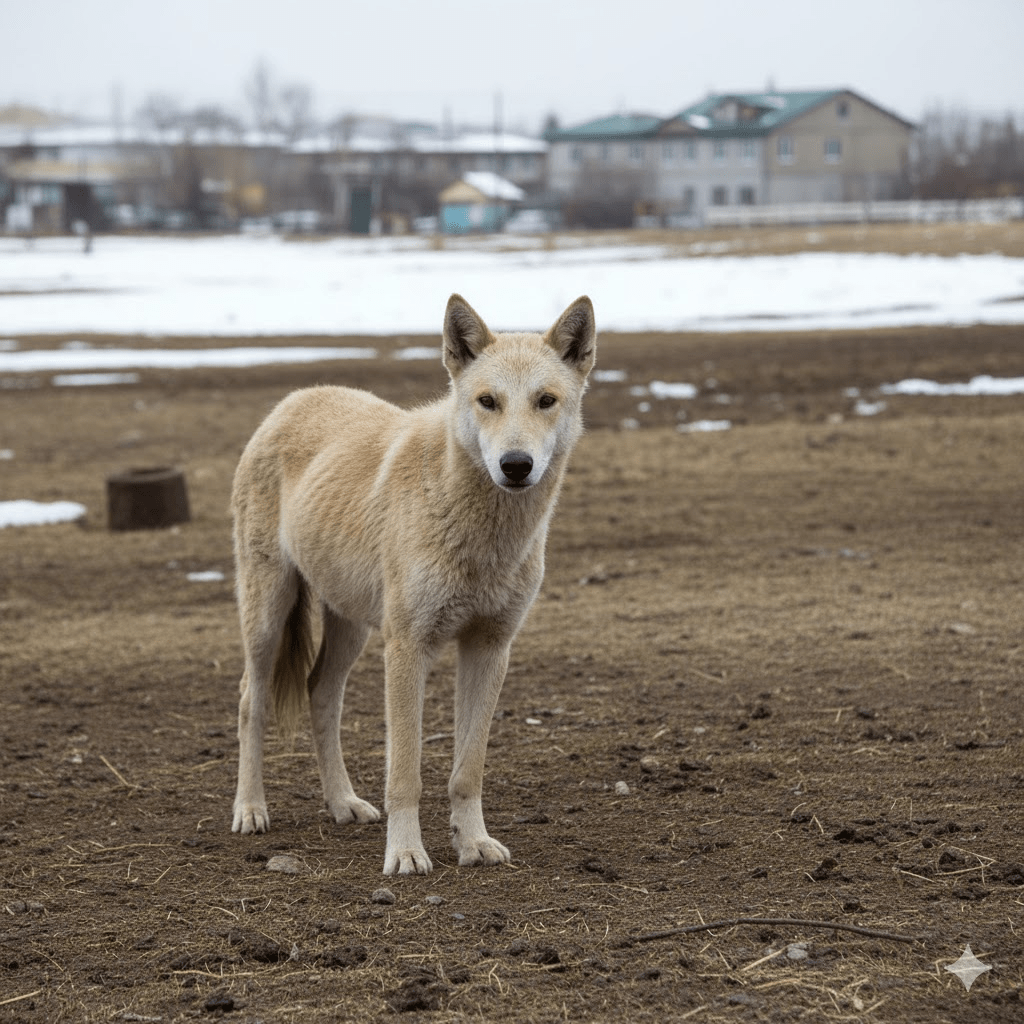The stark reality captured in this image resonates deeply, offering a poignant look into the challenging life of a chained dog enduring the unforgiving grip of winter. Its matted, frost-dusted fur and melancholic eyes convey a story of resilience against a backdrop of apparent neglect. This photograph, more than just a visual, serves as a powerful testament to the plight of countless animals globally who face similar, often unseen, struggles. It prompts us to consider the broader implications of animal welfare, particularly for those living in extreme conditions without adequate shelter, nourishment, or companionship. The image forces us to confront uncomfortable questions about our responsibilities towards domestic animals, especially those tasked with guarding or enduring the elements. This article aims to delve into the various facets of canine welfare in such environments, exploring the physical and psychological toll of neglect, the societal factors that contribute to these situations, and the essential steps needed to foster a more compassionate approach to animal care, ensuring that no animal is left to suffer in silence.

The physical impact of prolonged exposure to severe cold on an animal is immediate and severe. Hypothermia, frostbite, and dehydration are critical concerns. A dog like the one pictured, with its fur caked in snow and ice, is expending vast amounts of energy simply to maintain its body temperature. Without proper shelter – a well-insulated, dry space elevated from the ground – and adequate caloric intake, the animal’s immune system is compromised, making it susceptible to illnesses ranging from respiratory infections to skin conditions exacerbated by dampness and cold. The shallow, possibly frozen, water bowl further highlights the lack of basic necessities. Proper nutrition is not just about quantity but also quality, providing the essential fats and proteins needed to generate heat and repair tissue in harsh conditions. For working or outdoor dogs, their energy requirements skyrocket in winter, and failure to meet these needs can lead to rapid deterioration of health. The physical signs of suffering, while not always immediately apparent, manifest over time through weight loss, lethargy, dull coat, and behavioral changes.

Beyond the visible physical hardships, the psychological toll of isolation and neglect is equally devastating for a social creature like a dog. Chaining, by its very nature, restricts movement and limits interaction, leading to profound psychological distress. Dogs thrive on companionship, mental stimulation, and the ability to express natural behaviors like running, exploring, and playing. Deprived of these, they can develop a range of behavioral issues, including fear, aggression, anxiety, and depression. The eyes of the dog in the image reflect this emotional burden – a quiet resignation that speaks volumes about its inner world. Such prolonged stress can lead to chronic health problems, as the constant state of anxiety floods the body with stress hormones, weakening the immune system and contributing to physical ailments. A dog left alone in the cold, tied to a solitary spot, experiences not just physical discomfort but also a deep sense of abandonment and hopelessness.

One of the contributing factors to such situations is often a lack of awareness or understanding regarding proper animal care. In many communities, dogs are viewed primarily as working animals or property rather than companions with complex needs. Traditional practices, economic hardship, and insufficient access to veterinary care or educational resources can perpetuate these cycles of neglect. Some owners may simply not realize the extent of their animals’ suffering, or they may lack the means to provide adequate care, particularly during harsh weather. There can also be cultural variations in how animals are perceived and treated, which, while not excusing neglect, highlight the need for culturally sensitive education and outreach programs. Addressing these root causes requires a multi-faceted approach, encompassing community engagement, accessible resources, and a shift in perspective towards recognizing the intrinsic value and sentience of animals.

Recognizing the signs of neglect is the first step towards intervention. Beyond the obvious physical indicators like emaciation, matted fur, or visible injuries, behavioral cues can also signal distress. A dog that is excessively withdrawn, aggressive, fearful, or constantly pacing could be suffering from neglect. Furthermore, inadequate shelter, lack of fresh water, and insufficient food are clear red flags. It is crucial for communities to establish clear guidelines and enforcement mechanisms for animal welfare, providing avenues for concerned citizens to report suspected cases of neglect without fear. These systems should prioritize education and support for owners struggling to provide adequate care, rather than solely focusing on punitive measures, which can sometimes exacerbate the problem by leading to abandonment.

Effective solutions require a multi-pronged approach involving individual responsibility, community action, and legislative support. On an individual level, responsible pet ownership entails providing proper shelter, nutrition, veterinary care, and enrichment. This includes bringing outdoor animals inside during extreme weather, ensuring constant access to fresh, unfrozen water, and providing a warm, dry resting place. Communities can play a vital role by organizing educational campaigns, offering low-cost veterinary services, and establishing pet food banks or assistance programs for owners facing financial difficulties. Furthermore, strengthening and enforcing animal cruelty laws, coupled with adequate resources for animal welfare agencies, are essential to deter neglect and provide legal recourse for suffering animals. Advocating for anti-tethering laws or ordinances that restrict the prolonged chaining of dogs can also significantly improve their quality of life.






